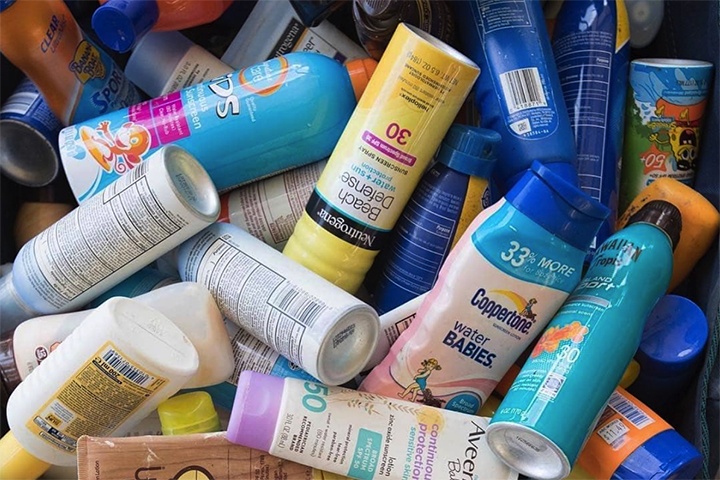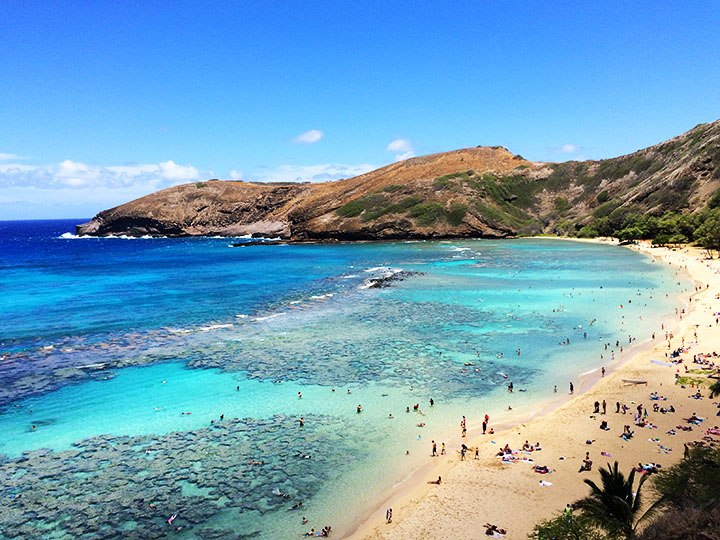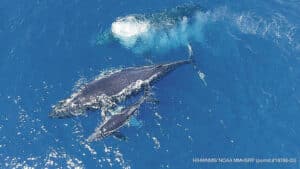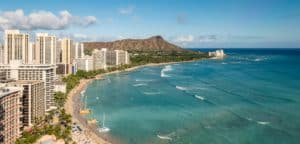
This article was originally published on April 22, 2023, and was updated Aug. 29, 2025.
Hawaii Sunscreen Ban: What Travelers Need to Know About Reef-Safe Sunscreen
Almost five years ago, the Hawaii sunscreen ban went into effect, making Hawaii the first state in the U.S. to prohibit the sale of sunscreen containing the coral-harming chemicals oxybenzone and octinoxate. This landmark Hawaii sunscreen law was designed to protect fragile reefs from banned sunscreen ingredients linked to coral bleaching. For visitors, that means knowing exactly what reef safe sunscreen you can use in Hawaii is just as important as packing your swimsuit.
Why is Reef-Safe Sunscreen Important in Hawaii?
Hawaii’s coral reefs are among the most diverse ecosystems on the planet, but they’re under threat. Scientists estimate that 14,000 tons of sunscreen wash into reef areas every year, adding to stress from warming oceans and pollution. Studies show that chemicals like oxybenzone and octinoxate—now banned sunscreens in Hawaii—contribute to coral bleaching.
When coral bleaches, it loses the algae that give it color and life, leaving it pale, weak, and more prone to disease. For travelers snorkeling at Hanauma Bay on Oahu or exploring reefs off Maui, the sunscreen you wear directly impacts the underwater world you’ve come to enjoy. That’s why following reef safe sunscreen guidelines is critical.

Trading in old sunscreen for reef safe versions. (Photo: Cindy Ellen Russel / Honolulu Star-Advertiser)
What Ingredients to Avoid in Sunscreen in Hawaii?
When shopping for sun protection, steer clear of these banned sunscreen ingredients:
-
Oxybenzone and Octinoxate – the two chemicals specifically prohibited under the Hawaii sunscreen law.
-
Petrolatum (mineral oil) – takes years to biodegrade and is harmful to aquatic life.
-
High concentrations of Titanium Dioxide – while a mineral, it can react in seawater to form hydrogen peroxide, which damages marine life.
Instead, look for sunscreens made with non-nano zinc oxide or titanium dioxide (if used appropriately). These are widely considered the safest UV blockers for both skin and reef.
Does Hawaii Require Reef-Safe Sunscreen? Can I Bring My Own?
You are allowed to bring sunscreen to Hawaii, but stores across the islands are no longer permitted to sell sunscreens with oxybenzone or octinoxate. That means if you show up with a bottle containing banned chemicals, it’s legal to carry but not recommended—for both the environment and social responsibility. Many travelers find it easiest to buy locally made reef safe sunscreen on Oahu, Maui, Kauai, or the Big Island.
If you’re wondering where to buy reef-safe sunscreen in Hawaii, the good news is that most convenience stores, surf shops, and even big-box retailers now carry eco-friendly sunscreen and biodegradable sunscreen options.
Reef-Safe Sunscreen in Maui & Oahu
Each island has embraced the shift toward safer sun protection. On Maui, visitors will find local favorites like Little Hands Hawaii and Raw Love stocked in beach shops. On Oahu, Kokua Sun Care and Mama Kuleana are widely available. Choosing these brands not only keeps your skin safe but also supports local businesses dedicated to ocean conservation.
Recommended Reef-Safe Sunscreens

The coral reefs at Hanauma Bay provide food, shelter, and breeding grounds for marine life, making the Oahu landmark one of Hawaii’s top attractions. (Photo: Napua Heen / Hawaii.com)
Here’s a curated list of sunscreens that meet reef safe sunscreen guidelines.
Please consider these sunscreens made in Hawaii. Note: As an Amazon Associate, we earn from qualifying purchases from Amazon.com.
- Kokua Sun Care Hawaiian SPF 50 Natural Zinc Sunscreen
- Mama Kuleana Waterproof SPF 30 Reef-safe Sunscreen
- Little Hands Hawaii SPF 35+ All-natural and Organic Sunscreen
- Raw Love SPF 35 All-natural Mineral Sunscreen
These sunscreens aren’t make in Hawaii but are reef-safe.
- Manda Organic SPF 50 Sun Paste
- Thinksport SPF 50 Sunscreen
- All Good SPF 30 Sport Sunscreen Lotion
- Babo Botanicals SPF 30 Clear Zinc Lotion
- Suntegrity Natural Mineral Sunscreen
- Badger SPF 30 Unscented Sunscreen Cream
- Raw Elements SPF 30 Certified Natural Sunscreen
- Stream2Sea SPF 30 Mineral Sunblock
- Loving Naturals Clear Body SPF 30+ All-natural Sunscreen
- Banana Boat Simply Protect SPF 50+ Sunscreen (spray, not lotion)
- Thrive Natural Care Reef-Safe Sunscreen SPF50
Final Tips for Travelers
-
Always check the label for reef safe sunscreen guidelines before buying.
-
Choose eco-friendly, biodegradable sunscreen with non-nano zinc oxide or safe forms of titanium dioxide.
-
If you forgot to pack it, don’t worry—there are plenty of places to buy reef safe sunscreen in Hawaii.
-
Protecting your skin doesn’t have to mean harming the ocean.
By following these steps, you’ll not only avoid banned sunscreens in Hawaii but also help preserve the reefs that make the islands so extraordinary.







